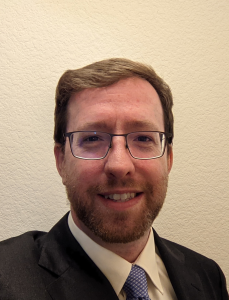The American Association of Variable Star Observers (AAVSO) has announced that Dr. Brian Kloppenborg is the new Executive Director of the organization. “Brian brings the skills needed to advance AAVSO’s scientific impact, combined with experience in management and project budgeting,” notes AAVSO President David Cowall. Prior to AAVSO, Brian was a research scientist at Georgia Tech Research Institute, serving as a subject matter expert, lead engineer, product owner, and project director on over $120M of sponsored programs.
 Founded in 1911, the AAVSO is an international nonprofit organization of citizen scientists and professional astronomers working together to increase the knowledge of the universe through variable star photometry and spectroscopy, and exoplanet observations. AAVSO’s mission is to enable anyone, anywhere, to participate in scientific discovery through variable star astronomy
Founded in 1911, the AAVSO is an international nonprofit organization of citizen scientists and professional astronomers working together to increase the knowledge of the universe through variable star photometry and spectroscopy, and exoplanet observations. AAVSO’s mission is to enable anyone, anywhere, to participate in scientific discovery through variable star astronomy
The AAVSO enables individuals to contribute to research on stars that vary in brightness with AAVSO 6,000 plus star observers worldwide to date. Currently, these volunteers collectively report about 13,000 observations every night in support of professional astronomers, including those using the Hubble Space Telescope.
Dr. Kloppenborg holds a Ph.D. in Physics, with an Astrophysics specialty, from the University of Denver. His research interests span photometry, spectroscopy, astrometry, and long-baseline optical interferometry of eclipsing binaries, novae, and young stellar objects. His work has been published in Nature, ApJ, JAAVSO, and other scholarly journals. Brian also ran a small business providing data science, machine learning, and GPU accelerated computing services.
Dr. Kloppenborg is enthusiastic about his position, and takes it seriously: “With my background,” Kloppenborg says, “not only do I understand where the science is and how the AAVSO can contribute, but also how to raise funds and implement successful programs.” Dr. Kloppenborg looks to form additional alliances. Like many nonprofits, the AAVSO aims to expand its partnerships, membership, and base of volunteer observers, and seeks to earn more grants and funding.
AAVSO data specialist Elizabeth Waagen commented, “Often, professional efforts provide data at a point in time. But an organized effort by generations of observers provides a long record of the star’s activity and evolution. That’s why astronomy needs an organization like us. A hundred years is a small slice in the life of a star, but stellar evolution can be detected within that time, so ongoing coverage is really important.”
Dr. Kloppenborg is no stranger to AAVSO, having participated in a large AAVSO observing campaign, Citizen Sky – an effort to characterize the eclipsing binary star epsilon Aurigae. Between 2009–2012, hundreds of observers followed this star, resulting in tens of thousands of photometric data points. The project was, for Dr. Kloppenborg, “the most fun job I ever had.”
“Astronomy is an interesting field, Dr. Kloppenborg reflects, “because it is about self-actualization. As the new Executive Director, I want to empower the AAVSO’s members to do their best and further their scientific endeavors.”
You can learn more about the AAVSO as well as how to participate here.
And to make it easier for you to get the most extensive news, articles and reviews that are only available in the magazine pages of Astronomy Technology Today, we are offering a 1-year magazine subscription for only $6! Or, for an even better deal, we are offering 2 years for only $9. Click here to get these deals which only will be available for a very limited time. You can also check out a free sample issue here.
The sun is more active than it has been in years! If you’d like to learn more the technology behind solar observing, solar imaging and more, you can check out our free publication, “The Definitive Guide to Viewing and Imaging the Sun”. You don’t have to sign up or provide any information, simply click here and enjoy reading!

